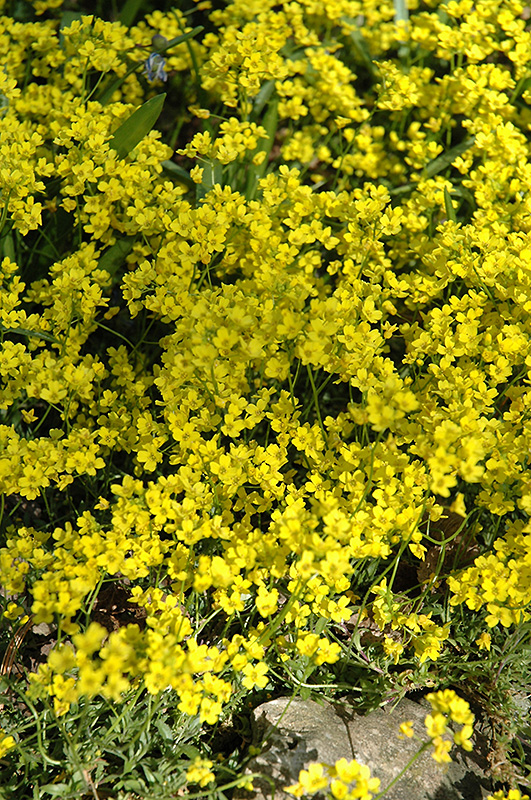Digging deeperPlant Library
Plant Height: 4 inches
Flower Height: 6 inches
Spread: 8 inches
Sunlight:
![]()
Hardiness Zone: 3
Ornamental Features
Siberian Whitlow Grass has clusters of yellow flowers at the ends of the stems from mid to late spring, which are interesting on close inspection. Its ferny leaves remain emerald green in color throughout the season.
Landscape Attributes
Siberian Whitlow Grass is an herbaceous perennial with a ground-hugging habit of growth. It brings an extremely fine and delicate texture to the garden composition and should be used to full effect.
This is a relatively low maintenance plant, and is best cleaned up in early spring before it resumes active growth for the season. Deer don't particularly care for this plant and will usually leave it alone in favor of tastier treats. It has no significant negative characteristics.
Siberian Whitlow Grass is recommended for the following landscape applications;
- Rock/Alpine Gardens
- Border Edging
- Groundcover
Planting & Growing
Siberian Whitlow Grass will grow to be only 4 inches tall at maturity extending to 6 inches tall with the flowers, with a spread of 8 inches. Its foliage tends to remain low and dense right to the ground. It grows at a slow rate, and under ideal conditions can be expected to live for approximately 10 years. As an herbaceous perennial, this plant will usually die back to the crown each winter, and will regrow from the base each spring. Be careful not to disturb the crown in late winter when it may not be readily seen!
This plant should be grown in a location with partial shade or which is shaded from the hot afternoon sun. It prefers dry to average moisture levels with very well-drained soil, and will often die in standing water. It is not particular as to soil pH, but grows best in sandy soils. It is somewhat tolerant of urban pollution. This species is not originally from North America. It can be propagated by division.
A NetPS Plant Finder tool
This Plant Library is for informational purposes only. We may or may not carry the items listed. During many times of the year, we may carry many more plants in our store than are listed in the Plant Library. Please contact us directly at 303-690-4722 or visit our store for current availability and for assistance.
